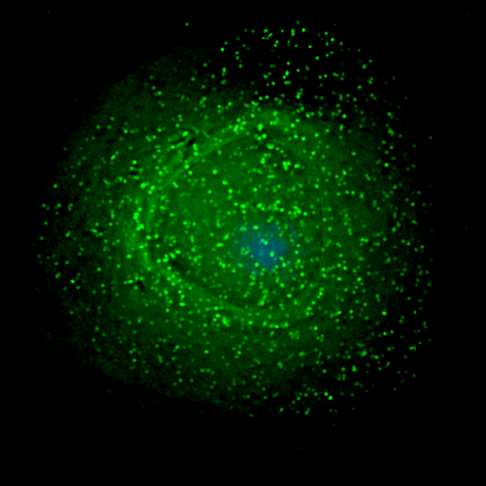|
Written by: Courtney Lysiak '23 Edited by: Ziwen Zhou '23 Pre-exposure prophylaxis (PrEP) is a prescription drug that prevents HIV-negative individuals from acquiring human immunodeficiency virus (HIV) if exposed. Prophylactic medications work to prevent infection upon exposure and can take the form of either pre-exposure prophylactics or post-exposure prophylactics. Pre-exposure prophylactics consist of a regimen to counteract infection before an exposure event, while post-exposure prophylactics can be taken to reduce infection risk after exposure. It is important to note that PrEP does not prevent other sexually transmitted infections/diseases or pregnancy. Pre-exposure prophylaxis (PrEP) is a prescription drug that prevents HIV-negative individuals from acquiring human immunodeficiency virus (HIV) if exposed. Prophylactic medications work to prevent infection upon exposure and can take the form of either pre-exposure prophylactics or post-exposure prophylactics. Pre-exposure prophylactics consist of a regimen to counteract infection before an exposure event, while post-exposure prophylactics can be taken to reduce infection risk after exposure. It is important to note that PrEP does not prevent other sexually transmitted infections/diseases or pregnancy. HIV is a retroviral illness that targets specific cells of the immune system called CD4+ cells. The virus infects these cells by binding to receptors on their surface. It then enters when an envelope that surrounds the viral material fuses with the host cell and injects the viral genome. HIV then uses the reverse transcriptase enzyme to turn its RNA into DNA, which makes the virus compatible with the host cell’s genetic material. The viral DNA enters the nucleus, where the enzyme integrase is used to insert it into the host cell’s DNA. Next, the virus uses the host cell’s machinery to produce new viral compounds which travel to the cell’s surface and form new HIV particles that exit the host cell to subsequently infect other CD4+ cells. If left untreated, HIV may lead to acquired immunodeficiency virus (AIDS), which may result in life-threatening illness (2). PrEP works by blocking the reverse transcriptase enzyme, making it impossible for the virus to replicate within the body. PrEP is a once daily fixed dose combining emtricitabine/tenofovir disoproxil fumarate (FTC/TDF). These two drugs belong to the class nucleotide analogue reverse transcriptase inhibitors (NRTIs), which create triphosphate that complete with cellular nucleotides by inserting a chain terminator into the growing viral DNA strand during the reverse transcription process. FTC/TDF is the preferred NRTI medication to prevent HIV infection due to its long intracellular half life, or length of time needed for the concentration of the drug to decrease to half of its original dose, making less frequent dosing possible without a decrease in efficacy (3). Individuals must be HIV-negative before starting a PrEP regimen and will likely be tested for HIV every three months for the duration of treatment. PrEP has been shown to be effective across gender identities and sexualities; however, certain brands lack extensive trials in some populations. PrEP is also shown to reduce risk of infection in injectable drug users. PrEP is typically well tolerated, but adherence to taking it everyday as prescribed is crucial to its efficacy. Treatment is recommended for high-risk individuals such as those who have unprotected sex with possible HIV-positive indiciduals or use injectible drugs. In order to reach sufficient levels of protection against HIV infection, PrEP must be taken consistently for at least seven days. To ensure protection at the end of treatment, PrEP must be continued for at least four week after the last exposure. PrEP is beneficial as a preventive care plan. Post-exposure prophylaxis (PEP) for HIV does exist in the form of a month long treatment; however, to be effective treatment must begin within 72 hours after a possible or confirmed exposure. Works Cited: [1] Citroner G. Cost of HIV Prevention Drug Discouraging People from doing PrEP Therapy [Internet] [Cited 14 Oct 2020]. Available from: https://www.healthline.com/health-news/cost-of-hiv-prevention-drug-discouraging-people-from-doing-prep-therapy#No-generics-in-the-United-States [2] Blumenthal J, Haubrich R. Pre-exposure Prophylaxis (PrEP) for HIV Infection: How Antiretroviral Pharmacology helps to Monitor and Improve Adherence. NCBI [Internet]. 26 Jun 2013 [Cited 14 Oct 2020]. DOi: 10.1517/14656566.2013.812072. [3] N.A. Pre-Exposure Prophylaxis (PrEP). CDC. [Internet] [Cited 15 Oct 2020]. Available from: https://www.cdc.gov/hiv/risk/prep/index.html#:~:text=Pre%2Dexposure%20prophylaxis%20(or%20PrEP,other%20medicines%20to%20treat%20HIV. [4] N.A. The Basics. Prepfacts. [internet] [Cited 15 Oct. 2020] Available from:https://prepfacts.org/prep/the-basics/
0 Comments
Leave a Reply. |

